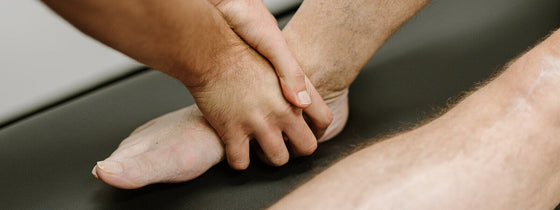Phase three, or the fun stage, signifies a massive step through rehab of returning to running. For many this will be a major hurdle both physically & psychologically. You have done a lot of work to prepare your body for the moments of first running, jumping, skipping and hopping again. You will have good strength surrounding your knee, have excellent pelvic control on one leg and absorb loads properly. Sometimes the biggest hurdle can be in the mind, because a lot of the time your initial injury will have been sustained during running, changing direction, or landing from a jump.
This stage of rehabilitation looks highly variable for every single person. The exercises and movements that a sprinter does will be completely different to what a water-polo player does, and different again from what a footballer will undertake. There will also be vast differences within sports based on what position you play and the requirements of that role. Many of the principles will be the same but the specific movements are individualised based on what is needed for a successful and maintained return to your chosen sport.
This stage does not mean that you can put all of your strength exercises in the bin – it is very important that some of your strengthening exercises will continue, but you will have a gradual progression of these to include more heavily eccentrically loaded exercises and plyometric movements. Technique and biomechanical movement patterns in this stage are absolutely paramount. It is all good and well to be strong enough to produce high levels of force but you must also be able to absorb and control this. This may means some modifications need to be made to the way that you would normally run, jump and change direction if deemed appropriate.
There will be a heavy focus on jumping and hopping in this phase – ideally we want excellent symmetry in technique, distances and endurance between limbs. We will also look at focusing on specific things such as ankle stiffness and lower limb alignment to make sure that you are transmitting forces well and not placing undue stress upon your knees. Your OHL physio will want to make sure that you are nailing your landings, change of directions and pivoting under all sorts of different conditions before progressing you back fully into your chosen sport.
Towards the end of this stage we hope to have you returning to some normal sport specific training and build your conditioning and endurance up to prepare you to tackle your return to sport successfully. This means kicking a football, dribble the soccer ball and passing & catching a netball will be involved.
Again, completion of this stage requires you to tick a number of specific boxes to ensure you are minimising your risk of re-rupture once you do resume your normal sporting exploits. These boxes include excellent control and symmetry during hopping tasks & changes of directions, having excellent dynamic balance and body control as well as having 100% strength compared to your other limb and pre rupture levels.
If you have commenced your ACL reconstruction rehab journey at OHL you will progress into this phase through our in-rooms consultations for testing, planning and technique lessons, but you will also have the opportunity of having the same expert eyes on you within our Group Physio program. In classes we can further teach the specifics of landings within our purpose-built Strength Lab facility, as well as keep your strength training optimised (in response to your growing strength capacity). Expert care through phase three is also open to new clients to our clinic who are seeking best-level education, skill development and programming as they return to their chosen sport. Do not leave this stage of your rehabilitation to chance, book in with our expert Physiotherapy team to be optimally supported back into running!

If you're experiencing back or neck pain with neurological signs and symptoms, a thorough neurological examination is crucial for accurate assessment and effective treatment. In this Optimal Tip learn more about what we mean by completing a neurological exam!

Squats, deadlifts, and calf raises are key movement patterns that should be part of every strength and conditioning program—regardless of age and activity level. These functional movements support joint health, improve posture and balance, and reduce the risk of injury while building strength where it matters most.

A ganglion cyst is a fluid-filled swelling that typically forms over a joint or tendon sheath, causing discomfort and pain, especially when pressing against nerves or joints. Proper assessment and treatment, including physiotherapy, are essential for managing symptoms and improving function in the presence of a ganglion in your hand, foot, or wrist.